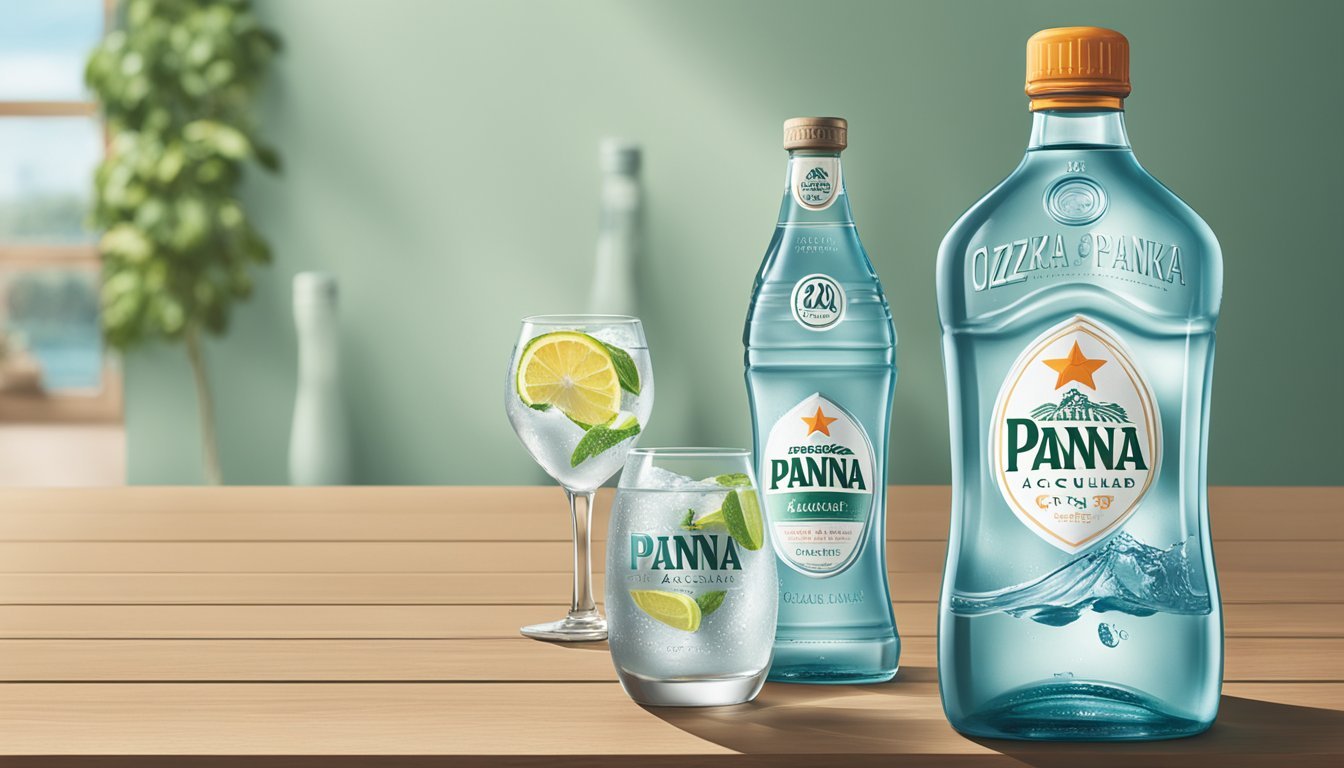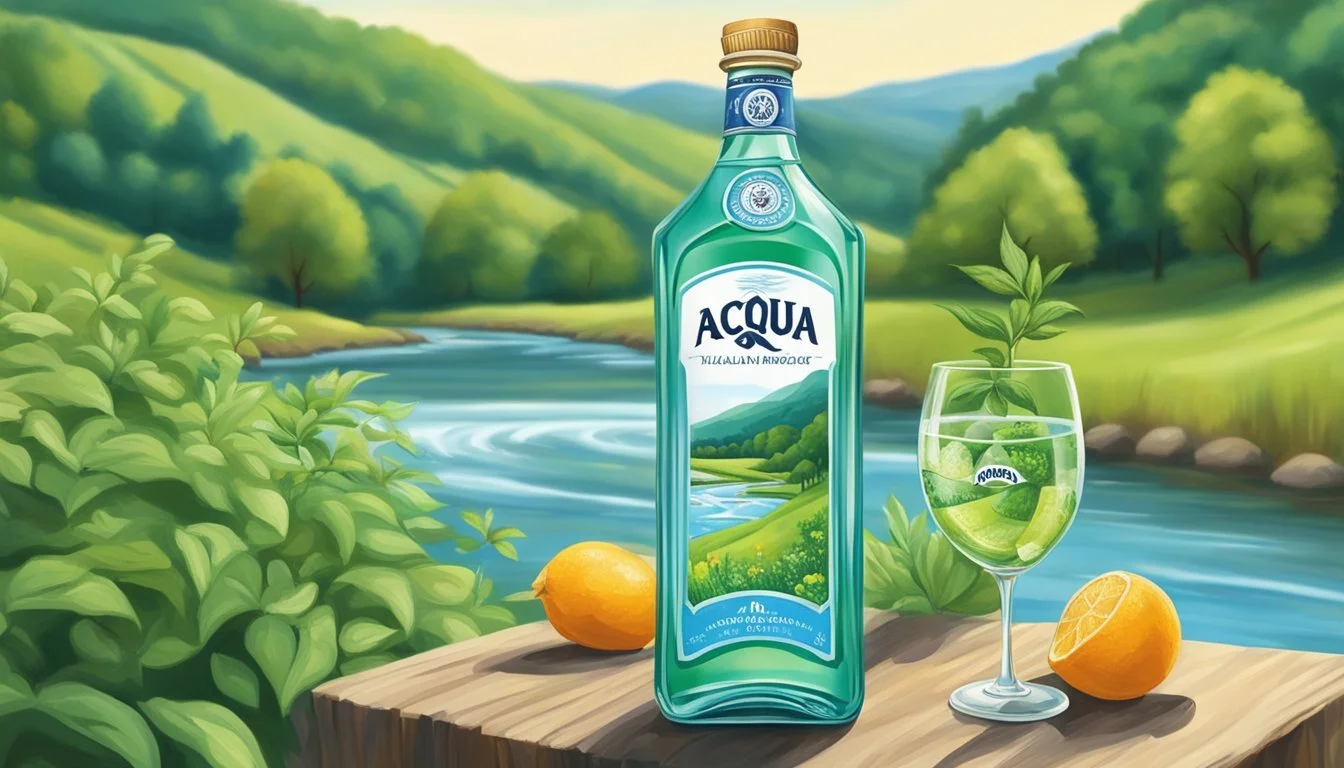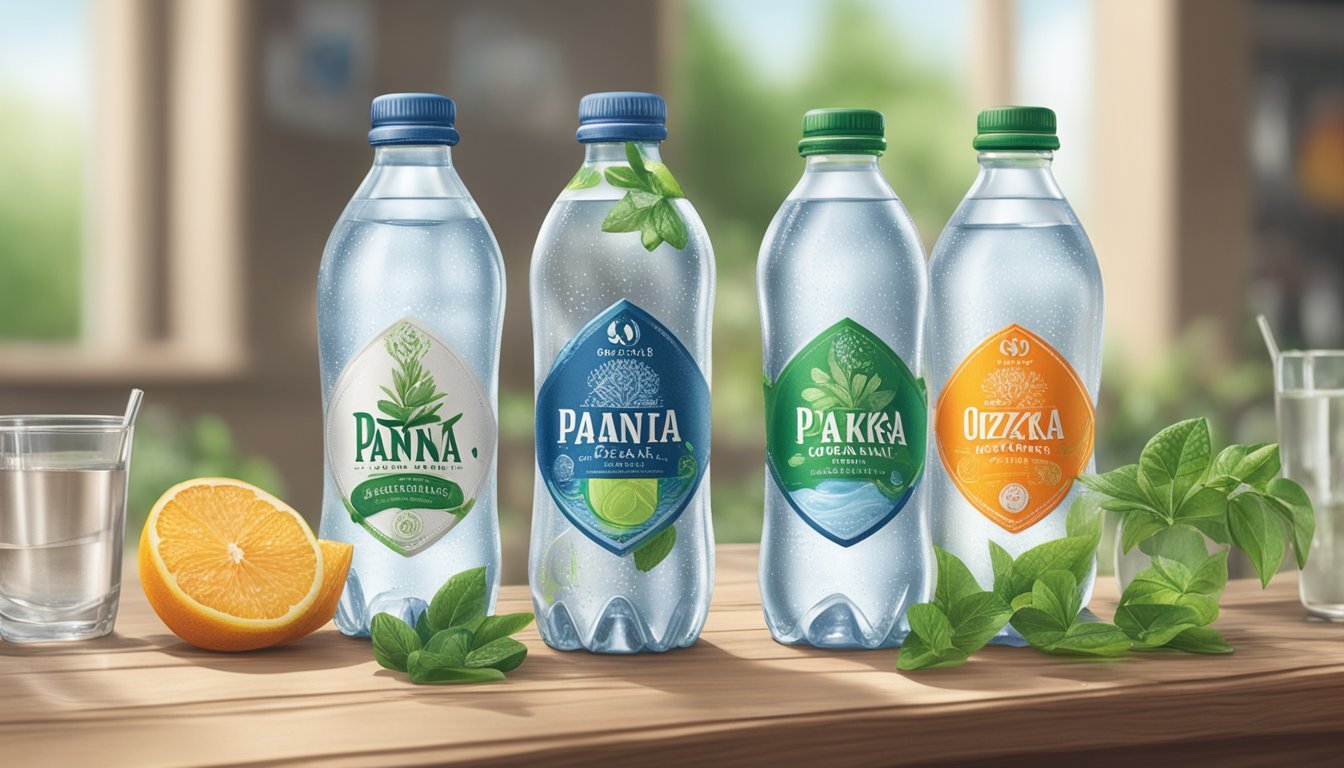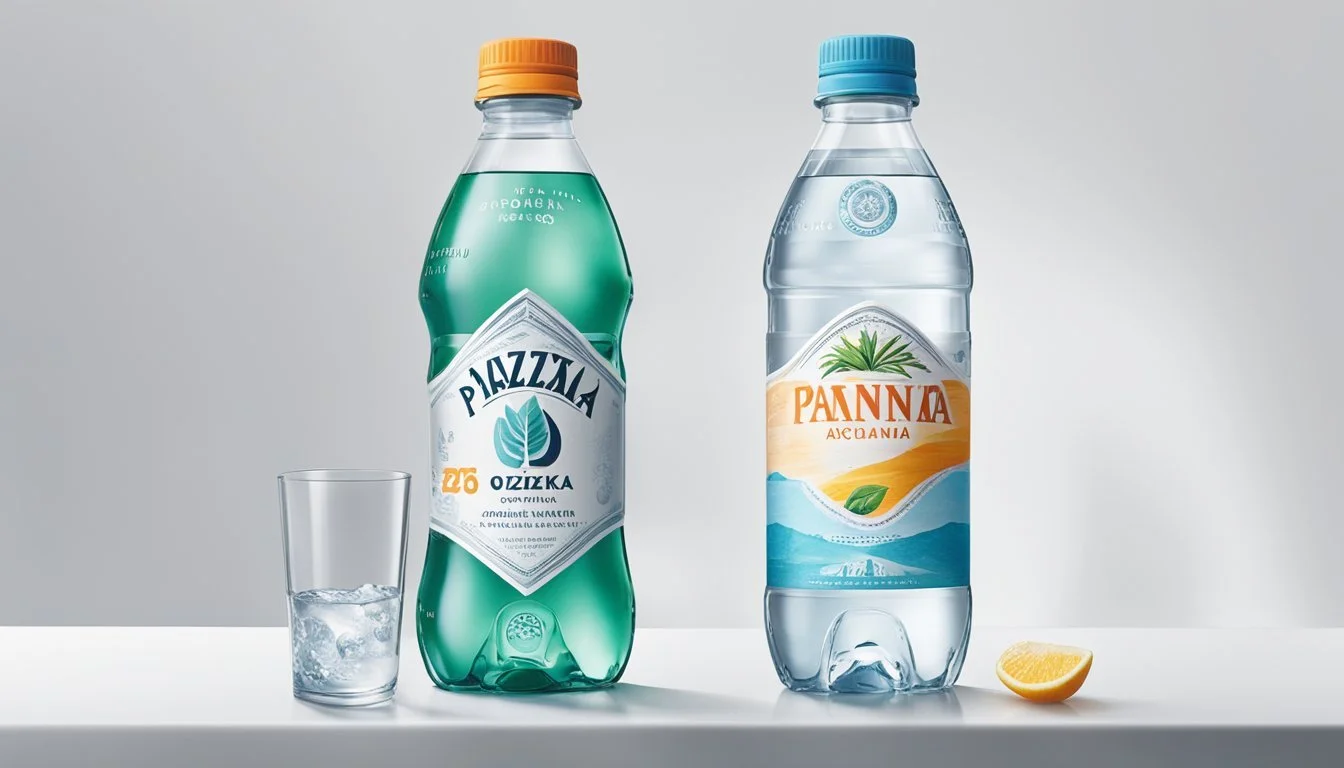Acqua Panna vs. Ozarka
Unveiling the Superior Bottled Water Choice
When it comes to choosing bottled water, consumers are often faced with a plethora of options, each boasting purity, taste, and mineral content as selling points. Two brands that frequently come up for comparison are Acqua Panna and Ozarka. Acqua Panna, hailing from Italy, is known for its smooth taste and originates from the Apennine Mountains, providing a European flair to its branding. Ozarka, on the other hand, stakes its reputation on being a local favorite in the United States, sourced from Texas springs, with many consumers appreciating its accessibility and regional resonance.
The choice between Acqua Panna and Ozarka may boil down to personal preference, but various factors can be considered to determine which bottled water might be superior. These factors include the source of the water, its mineral content, the bottling process, taste profile, and the brand's environmental impact. While Acqua Panna touts a naturally occurring mineral balance and a long-standing heritage dating back to the Renaissance, Ozarka emphasizes its commitment to providing a fresh taste from natural springs.
Ultimately, the discussion of which bottled water is better is not just about the physical product but also the values and preferences of the individual consumer. Some may prioritize the exotic appeal and mineral composition of Acqua Panna, while others may prefer the regional loyalty and cost-effectiveness offered by Ozarka. This article aims to compare these two brands on various aspects to help consumers make an informed choice.
Overview of Bottled Water
Bottled water has become a staple in daily life, with numerous brands vying for market share. This section will examine the evolution of these brands and their current standing in the market.
Evolution of Bottled Water Brands
The bottled water industry has a rich history, evolving from simple glass containers to the plastic bottles that dominate the market today. This transformation has been influenced by advancements in purification technology and packaging innovation. In earlier times, bottled water was a product consumed mainly for its perceived medicinal benefits, and it was a luxury accessible to those who could afford it. However, over the centuries, it has transitioned into an everyday item available worldwide, with brands such as Acqua Panna and Ozarka known for their distinctive sources and quality.
Popularity of Bottled Water in the Market
Today's market for bottled water reflects a diverse variety of brands, each with its own selling points, whether it be taste, source, or additional health benefits.
Top-selling brands:
Premium: Brands like Acqua Panna highlight their natural spring sources and the lengthy filtration processes the water undergoes.
Mass-market: Other brands, such as Ozarka, focus on widespread availability and cost-effectiveness.
The market has seen a trend toward consumers valuing not just hydration but also the specific qualities of the water they choose. This shift has guided companies to invest in distinguishing their product, whether through pH balance, mineral content, or eco-friendly packaging. The consumer's choice often reflects a combination of personal taste preference, brand trust, and the perceived purity of the water.
Acqua Panna: The Italian Essence
Acqua Panna stands out for its historical significance and fine quality that reflects the rich essence of the Italian region of Tuscany.
Historical Background of Acqua Panna
In the heart of Tuscany, the Acqua Panna brand draws from a legacy intertwined with Italian history. The natural spring water is sourced from a land once a hunting reserve for the powerful Medici family during the Renaissance. It is named after the region of its origin, Villa Panna, where the springs have quenched the thirst of many since the sixteenth century.
Source and Composition
Acqua Panna springs from deep within the Tuscan Apennines, specifically at an altitude of 1,128 meters. The journey of this natural spring water begins with a 13 to 14-year purification through underground aquifers, which naturally endows the water with a special mineral balance. Notably, Acqua Panna's composition is rich in calcium and magnesium, with a low content of sodium that contributes to its soft and smooth taste.
Mineral Content:
Calcium: Essential for bone health
Magnesium: Contributes to electrolyte balance
Sodium: Delicately present for maintaining mineral balance
Distinct Taste Profile
Acqua Panna is celebrated for its distinct taste profile that is often described as smooth and velvety. This is due to the unique terroir of the Tuscan hills and the water's natural filtration process. Unlike other mineral waters which may have a sharp or distinct mineral flavor, such as VOSS, Acqua Panna offers a subtle taste that purists often describe as the perfect companion to fine dining, enhancing the flavors of the cuisine without overpowering it.
Label Analysis:
Tuscany's Finest: A statement on the purity and prestige of the source
Smooth Taste: A testament to the unique mineral balance
Natural Spring Water: Assurance of the water's untouched quality
Ozarka: The American Choice
Ozarka is a brand that resonates with American consumers, offering natural spring water sourced from the heart of Texas. This section will explore Ozarka's origins, the specific sources of its water, and the qualities that contribute to its refreshing taste and popularity.
The Story of Ozarka
Ozarka's journey began in 1905, exemplifying a rich American heritage. Bottled originally in Eureka Springs, Arkansas, it now stands as a symbol of the American spirit, providing Mountain Spring Water chiefly from three springs in the region of the Ouachita Mountains in Texas.
Water Source and Natural Composition
Ozarka spring water originates from dedicated natural springs in Texas, such as Roher Spring and Moffit Spring, where the water is naturally filtered and high in mineral content which contributes to its distinctive, refreshing taste. Mineral content is a key aspect of Ozarka's profile, featuring a blend of calcium, magnesium, and potassium, offering a crisp natural flavor.
Sources: Roher Spring, Moffit Spring, Piney Woods Springs
Minerals: Calcium, Magnesium, Potassium
Taste and Refreshment Value
Consumers often describe Ozarka as exceptionally refreshing, attributing this quality to its balance of minerals and its purity from natural filtration processes. The water taste is frequently noted for being clean and satisfying, positioning Ozarka as a preferred choice for everyday hydration among other brands like Deer Park and Zephyrhills.
Comparative Analysis
Selecting between Acqua Panna and Ozarka bottled water hinges on several factors: the taste profile of each water, the pH level and related health implications, and the brands' environmental impact through their respective packaging choices.
Taste Comparison: Acqua Panna vs. Ozarka
Acqua Panna, sourced from Tuscany, Italy, is often lauded for its naturally occurring minerals and smooth taste. The brand claims an absence of any aggressive flavors, providing a clean and light finish. In contrast, Ozarka, sourced from multiple springs in Texas, provides a taste that some describe as fresh and crisp, though it can vary slightly based on the source.
Taste Profiles:
Acqua Panna: Smooth, light, mineral-infused
Ozarka: Crisp, fresh, source-variable
PH Level and Health Implications
PH levels in water can influence its taste and potential health effects. Acqua Panna maintains a neutral pH balance, typically around 8.0, which can be beneficial for those seeking to maintain a balanced dietary pH. Ozarka's pH level is also neutral, generally close to 7.0, which is considered ideal for drinking water.
Some consumers prefer alkaline water, such as Essentia or Icelandic Glacial, which claim higher pH levels and health benefits, including better hydration. However, it's worth noting that most health experts assert that normal water consumption doesn't significantly alter the body's pH balance due to the body's robust regulatory systems.
PH Levels:
Acqua Panna: ~pH 8.0
Ozarka: ~pH 7.0
Environmental Impact and Packaging
Packaging choices reflect environmental impact as consumers increasingly demand eco-friendliness. Acqua Panna recently introduced eco-friendly, recyclable glass bottles, aligning with brands like Voss and Fiji that also offer glass options. Ozarka primarily utilizes plastic bottles, but it emphasizes that they are made from recycled materials and are themselves recyclable. Despite this, glass bottles typically have a reputation for being more environmentally benign than plastic, provided they are reused or recycled properly.
Packaging Materials:
Acqua Panna: Recyclable glass bottles
Ozarka: Recyclable plastic bottles
As the bottled water industry evolves, brands are venturing into more sustainable packaging options like boxed water, aluminum cans, or offering carbonated versions such as sparkling water, catering to varied consumer preferences while mitigating environmental impact.
Given these comparative factors, consumers can make informed choices about bottled water based on their personal preferences for taste, health considerations, and environmental values.
Consumer Preferences
Consumer choices in bottled water are influenced by factors such as brand reputation, restaurant usage, and market trends. Understanding these preferences is crucial in determining why individuals may lean towards one brand over another.
Branding and Perceived Quality
Consumers often associate the branding of bottled water with quality. For instance, Acqua Panna is known for its Tuscan heritage and smooth taste, which conjures an image of high-quality water. Conversely, Ozarka, sourced from Texas, may be regarded as a more local and everyday choice. Brands like Fiji Water and Evian have established a reputation for providing natural spring water that's both pure and tastes distinct. Each brand, from Voss with its sleek bottle design to Nestlé's Pure Life, which is known for its wide accessibility, has its own perceived level of quality among consumers.
Water in Fine Dining and Restaurants
In the context of fine dining and restaurants, the selection of water is often a reflection of the establishment's quality. Typically, higher-end restaurants stock brands such as Acqua Panna or Voss, which are considered high-quality waters and often imported. These brands are seen as enhancing the fine dining experience. On the other hand, brands like Ozarka and Poland Spring are more commonly found in casual dining settings due to their broad recognition and cost-effectiveness.
Market Trends and Consumer Behavior
The market reflects a growing trend towards natural water brands, with an emphasis on natural spring water that's marketed as being from pristine sources, such as Icelandic Glacial. Consumers are becoming more health-conscious, and as a result, a brand’s purity and filtration process, like that of Dasani or Aquafina, can be a deciding factor in their purchase. Recent surveys indicate a preference shift among consumers towards eco-friendly and sustainable water brands, with Arrowhead promoting its use of recycled materials, which appeals to environmentally conscious buyers.
Health and Hydration
In the debate between Acqua Panna and Ozarka, health benefits and hydration efficiency are crucial factors. Both brands bring distinct qualities to the table when it comes to their electrolyte content and the presence of minerals versus the risk of contaminants.
Electrolyte Content and Hydration
Electrolytes are vital for hydration as they help regulate bodily functions. Acqua Panna, sourced from Tuscany, Italy, is known for its natural electrolytes like calcium, magnesium, and potassium, which aid in effective hydration. Its naturally occurring minerals can contribute to its total dissolved solids (TDS) content, enhancing taste and replenishing essential electrolytes lost through sweat.
On the other hand, Ozarka, which is sourced from Texas, also provides electrolytes but has a different mineral profile due to its unique regional sources. It is typically rich in sodium, which is essential for hydration but should be consumed in moderation.
Acqua Panna:
Calcium: Supports bone health.
Magnesium: Aids muscle and nerve function.
Potassium: Crucial for heart and kidney health.
Ozarka:
Sodium: Essential for fluid balance.
Mineral Benefits Vs. Contaminants Risk
Mineral water like Acqua Panna offers not only hydration but also a range of health benefits due to its essential minerals. These minerals come from natural filtration through underground layers, which can also lead to a lower risk of contaminants like nitrate.
Ozarka, while still providing hydration benefits, may have varying levels of total dissolved solids and potential contaminants depending on the source and processing. Monitoring for impurities such as nitrate is essential to ensure the water's safety for consumption. Both brands abide by regulatory standards, but the natural filtration process of mineral waters like Acqua Panna might provide an edge in purity.
Essential Minerals Provided:
Acqua Panna: Calcium, Magnesium, Potassium.
Ozarka: Varies depending on source.
Contaminant Risks:
Acqua Panna: Lower due to natural filtration.
Ozarka: Regulated, however, source-dependent.
Convenience and Accessibility
When comparing Acqua Panna and Ozarka bottled waters, consumers consider the convenience and accessibility of the products. This encompasses both the sustainability of the packaging and the ease of finding these brands in various regions.
Packaging Types and Sustainability
Acqua Panna: This brand offers their water in glass and plastic bottles, with a 1-liter glass bottle as a notable option for those seeking a more sustainable choice. Glass packaging, due to its recyclability, appeals to environmentally conscious consumers.
Ozarka: Primarily distributed in plastic bottles, Ozarka focuses on convenience. However, they have made efforts to reduce their environmental impact by producing lightweight Eco-Shape® bottles, which use less plastic than their previous designs.
Sustainability Efforts:
Acqua Panna: Emphasis on recyclable glass bottles.
Ozarka: Eco-friendly initiatives with streamlined plastic designs.
Distribution and Availability Across Regions
Acqua Panna has an Italian heritage and is part of the international portfolio of bottled waters by Nestlé. Its global distribution network ensures high availability, although it might be less accessible in some regions due to its import status.
Ozarka, a Nestlé brand as well, is sourced from multiple Texan springs and enjoys a strong presence in the south-central United States. This regional focus ensures widespread availability where it's most popular.
Distribution Networks:
Acqua Panna: Widespread due to Nestlé's global reach.
Ozarka: Strong in the south-central U.S., with a more localized distribution strategy.
Legislation and Industry Standards
The quality and safety of bottled water like Acqua Panna and Ozarka are heavily influenced by legislation and industry standards, ensuring that consumers have access to reliable and consistent product information.
Regulations Governing Bottled Water
The Food and Drug Administration (FDA) sets stringent regulations for bottled water, overseeing its safety, production, and distribution. Groundwater sources, such as those used by Ozarka, must adhere to federal and state regulations to ensure that the water is free of contaminants, including microplastics. Manufacturers must regularly test water quality and may employ processes such as Hydr0-7 filtration, used by Eternal Water, to reduce unwanted particles.
Stringent industry standards also exist to categorize bottled waters into types such as spring, mineral, or artesian. For example, Mountain Valley Spring Water is classified as spring water, a type that must be derived from an underground formation from which water flows naturally to the surface. These regulations are in place to classify bottled waters from worst to best based on several quality indicators.
Labeling and Ingredient Disclosure
All bottled water companies, including those like Ethos Water, must clearly label their products with accurate ingredient lists. Labels provide consumers with crucial information about the source and contents of the water, including any added ingredients such as those found in enhanced waters like BluTriton brands.
The FDA also mandates that labels must not be misleading, ensuring transparency in the industry. This allows consumers to make informed decisions on purchases based on ingredient lists and origins of the water, thus informing their choice from worst to best. Ethical disclosure on labels also extends to microplastic content, which some brands may test for and report.
Final Recommendations
When considering Acqua Panna and Ozarka, one must weigh personal preferences and the specific characteristics of each brand. The following subsections provide guidance on selecting the ideal type of water for individual needs and assess the quality and safety of both options.
Choosing the Right Type of Water for Your Needs
Selecting between Acqua Panna and Ozarka largely depends on whether one prefers still or sparkling water. Acqua Panna is renowned for its still water, sourced from the hills of Tuscany, offering a taste reflective of its pristine mountain water source. It provides a smooth and clean drinking experience, making it a premium choice for those who favor still water without carbonation.
Ozarka, on the other hand, offers both still and sparkling varieties. It sources its water from three springs in Texas, and its selection includes flavored sparkling water options, catering to those seeking variety and effervescence. When determining the best fit, consumers should consider the occasion and whether the crispness of sparkling water or the softness of still water suits their palate or hydration needs better.
Assessment of Water Quality and Safety
Quality water is not just a matter of taste but also of safety and content. Acqua Panna maintains high quality standards, ensuring that its bottled spring water is clean and safe for consumption. Their still water goes through extensive filtration, preserving the water's natural minerals and composition, which are key characteristics valued by consumers.
Ozarka, echoing this commitment to quality, also adheres to strict standards. Their bottled spring water is subjected to rigorous testing to guarantee the provision of quality, clean drinking water. The choice between Acqua Panna and Ozarka may then come down to the specific taste profile and mineral content that one prefers.
In conclusion, both brands have their unique advantages, and the choice should be made based on personal preference for taste, type of water, and intended use. Whether it's the refined taste of Italian mountain water or the convenience of domestic sparkling varieties, both Acqua Panna and Ozarka offer high-quality, safe bottled water options.
Conclusion
When comparing Acqua Panna and Ozarka bottled waters, consumers need to consider factors such as taste, source, and mineral content. Acqua Panna hails from Tuscany, Italy, and is renowned for its smooth taste and natural mineral balance. It is often preferred by those who value a soft mouthfeel and a touch of sophistication in their water choice.
Ozarka, on the other hand, is sourced from springs in Texas. It is a favored choice among those who seek a more robust flavor profile and appreciate water sourced within the United States. Ozarka's mineral content contributes to its distinct taste, which some find more refreshing.
Taste:
Acqua Panna: Smooth, velvety
Ozarka: Robust, crisp
Source:
Acqua Panna: Tuscany, Italy
Ozarka: Texas, USA
Mineral Content:
Acqua Panna: Naturally balanced
Ozarka: Noticeable, varies by source
Consumers should decide based on personal taste preference and the importance they place on the origin and composition of their water. Each brand carries its own unique appeal, and the "better" option is one that aligns more closely with individual priorities and palate.
In terms of environmental impact, one should also consider the implications of transporting bottled water from distant sources as opposed to choosing closer, regional options. Acqua Panna and Ozarka both offer distinct choices, and discerning consumers are encouraged to explore both to determine which water best suits their hydration needs.








